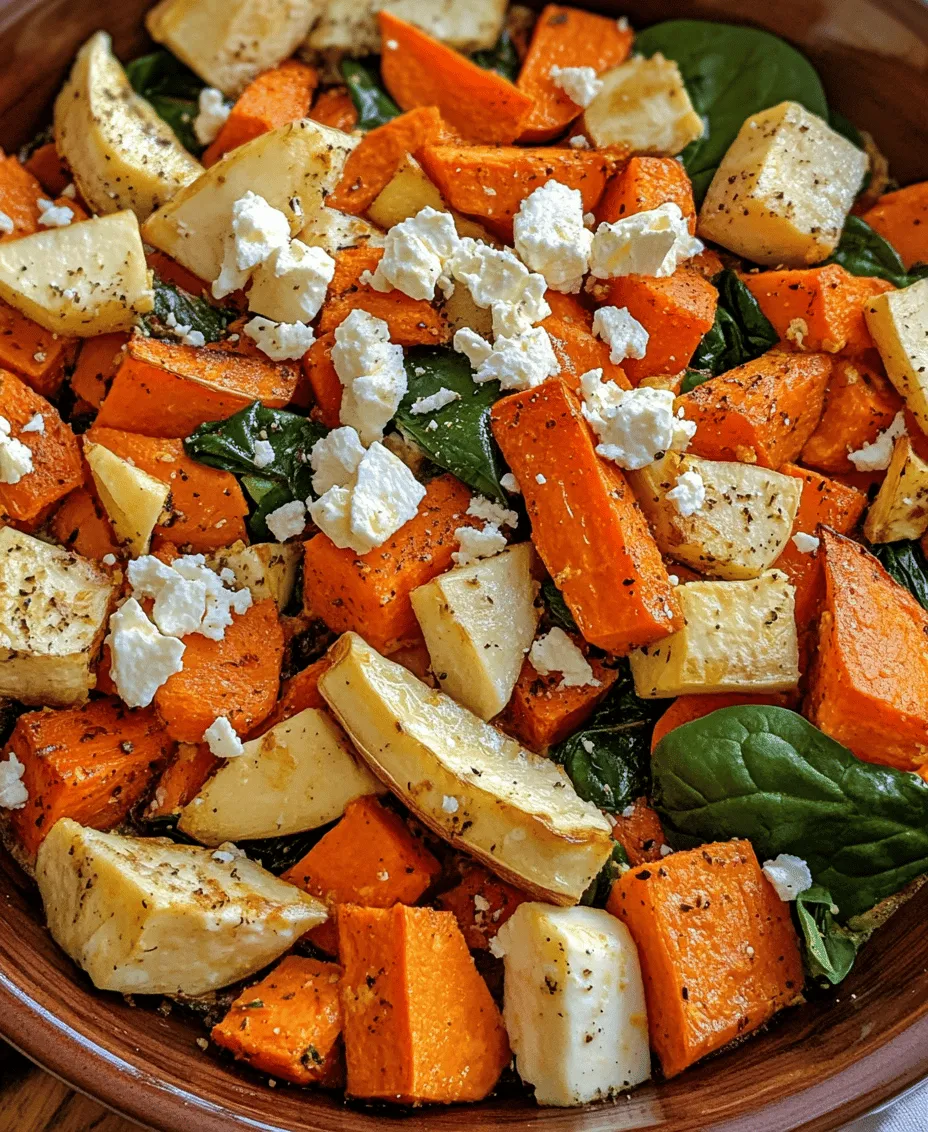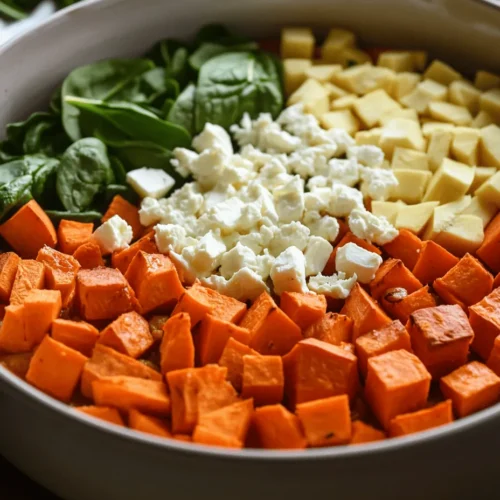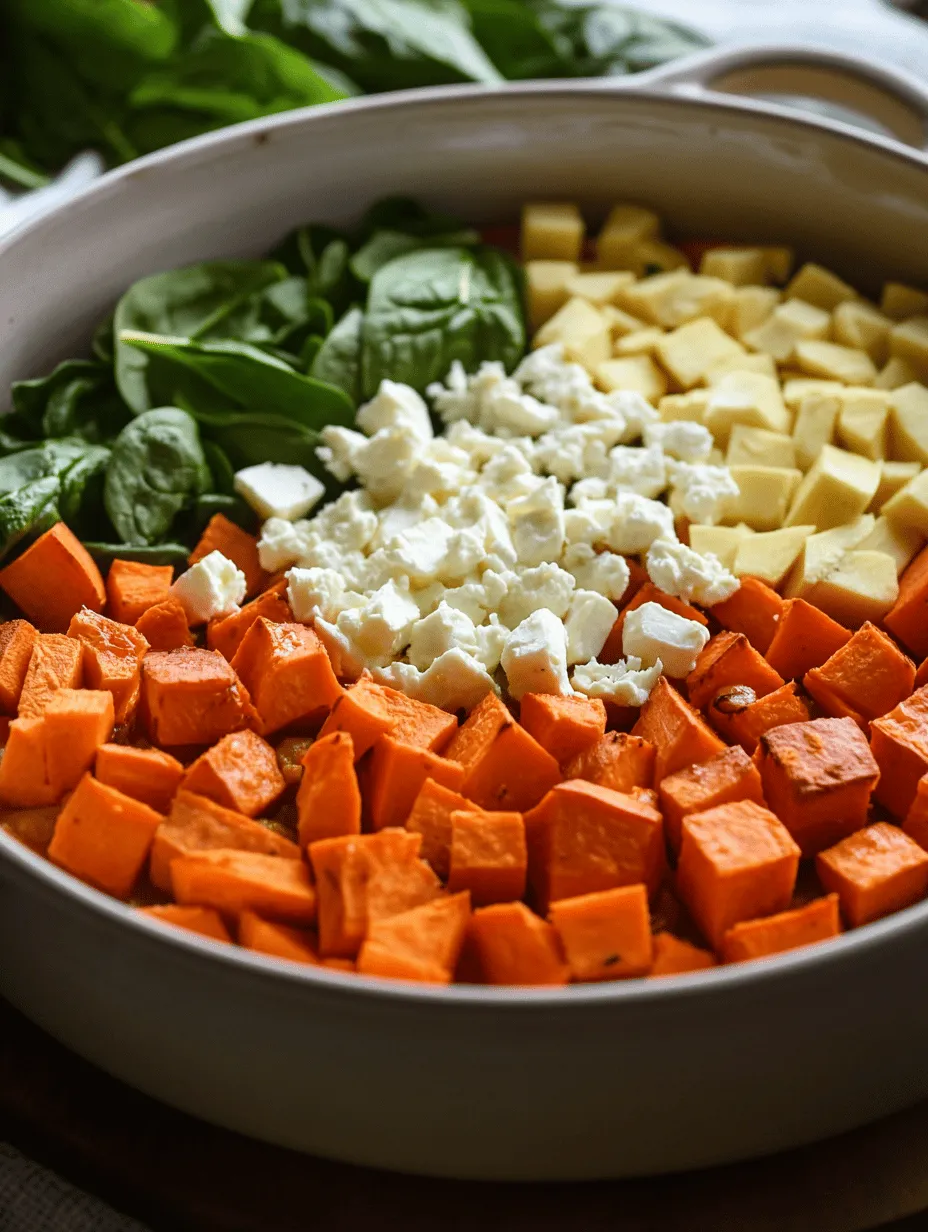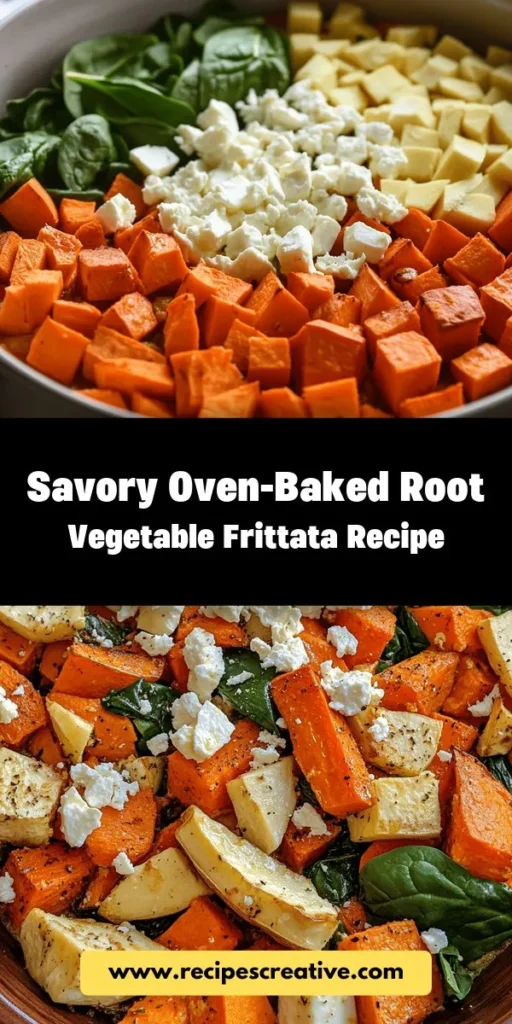Introduction
Frittatas are a culinary gem, celebrated for their versatility and ability to elevate any meal of the day. This Italian-inspired dish is traditionally made with eggs, but it can be packed with a variety of ingredients, allowing for endless customization. The distinction of a frittata lies in its simple preparation and the ease with which it can accommodate whatever ingredients you have on hand. Today, we’re focusing on an enticing oven-baked root vegetable frittata, a wholesome option that’s perfect for breakfast, brunch, lunch, or even a light dinner.
Incorporating root vegetables into your meals offers a host of benefits. Root vegetables like sweet potatoes, carrots, and parsnips are not only delicious, but they also provide essential nutrients, including fiber, vitamins, and minerals. These earthy vegetables add depth and flavor to the frittata, making it not only satisfying but also nutritious. Moreover, they are typically available year-round, making them a reliable ingredient in your kitchen.
This oven-baked root vegetable frittata is perfect for various occasions, whether you’re hosting a brunch gathering or simply looking for a quick and healthy weeknight meal. It’s a dish that appeals to both vegetarians and meat-lovers alike, and it can be made ahead of time, allowing for convenient meal prep.
Understanding the Ingredients
Eggs
The foundation of any frittata is, of course, eggs. Eggs are a powerhouse of nutrition, providing high-quality protein, essential vitamins, and healthy fats. They serve as the binding agent that holds the frittata together, creating a fluffy, cohesive dish when cooked properly. For those with dietary preferences or restrictions, there are several egg substitutes available. Silken tofu or a combination of chickpea flour and water can mimic the texture of eggs, making them suitable options for vegan versions of this frittata.
Whole Milk
To achieve a rich and creamy texture, whole milk is ideal for frittatas. It enhances the flavor and moisture, ensuring that the final dish is not dry. If you’re lactose-intolerant or prefer a dairy-free alternative, options like almond milk, oat milk, or coconut milk can be used. Just be mindful of the flavors these alternatives may impart, as they can slightly alter the taste of the frittata.
Root Vegetables
The star of our frittata is the delightful mix of root vegetables. Sweet potatoes, carrots, and parsnips are excellent choices, each contributing unique flavors and textures. Sweet potatoes are naturally sweet and rich in beta-carotene, while carrots add a crunchy texture and vibrant color. Parsnips offer a slightly nutty flavor that complements the sweetness of the other vegetables. Incorporating these root vegetables not only boosts the nutritional profile of the dish but also adds a depth of flavor that is both hearty and satisfying.
When sourcing root vegetables, consider seasonal availability for the best flavor and quality. Fall and winter are prime seasons for these vegetables, but they can often be found year-round at local markets. Look for firm, unblemished specimens for the best results.
Spinach
Spinach is a fantastic addition to our frittata, contributing both color and a wealth of nutrients. Rich in iron, vitamins A and C, and antioxidants, spinach offers numerous health benefits. It adds a lovely green hue to the frittata and a hint of earthiness that pairs well with the root vegetables. You can use fresh spinach for a vibrant taste, but frozen spinach works too—just ensure to thaw and drain it well before adding it to the mixture.
Feta Cheese
Feta cheese is often included in frittata recipes to enhance flavor, bringing a salty, tangy note that beautifully complements the sweetness of the root vegetables. If you’re looking to keep the dish vegetarian-friendly, feta is a perfect choice. However, it can easily be omitted for a dairy-free or vegan version, or substituted with plant-based cheese alternatives that mimic its flavor and texture.
Herbs and Spices
To elevate the flavor of our frittata, we’ll rely on a blend of herbs and spices. Fresh thyme is a classic choice, imparting a fragrant aroma and robust flavor that pairs well with the earthiness of root vegetables. Salt and pepper are essential for seasoning, enhancing the overall taste of the dish. If you want to experiment with different flavors, consider adding herbs like parsley, dill, or even a pinch of smoked paprika for a unique twist.
Preparation Steps Explained
Preheating the Oven
Before diving into the cooking process, it’s crucial to preheat your oven. Proper preheating ensures even cooking throughout the frittata, allowing it to rise beautifully and achieve a golden-brown top. Set your oven to 375°F (190°C) and give it ample time to reach the desired temperature before placing the frittata inside. This small step makes a significant difference in the final outcome of your dish.
Sautéing the Vegetables
The first major step in preparing this oven-baked root vegetable frittata is sautéing the vegetables. This technique not only enhances the flavor but also achieves the desired texture. Begin by peeling and dicing your chosen root vegetables into small, uniform pieces. This ensures even cooking, allowing them to soften without becoming mushy.
Heat a drizzle of olive oil in a large skillet over medium heat. Once the oil is shimmering, add the diced root vegetables and sauté them for about 5-7 minutes, stirring frequently. You want them to become tender and lightly caramelized, which will deepen their natural sweetness and flavor.
After the root vegetables have softened, add in the fresh spinach and continue to sauté for an additional 2-3 minutes until the spinach wilts and reduces in volume. This step not only adds color and nutrients but also ensures that the spinach is evenly distributed throughout the frittata.
By following these initial steps, you will set the stage for a delicious and satisfying oven-baked root vegetable frittata. In the next section, we will delve into the process of combining the egg mixture and baking the frittata to perfection. Stay tuned for the rest of this delightful recipe!

Importance of Caramelization for Depth of Flavor
Caramelization is a crucial step in developing the rich, complex flavors of your Oven-Baked Root Vegetable Frittata. When root vegetables such as carrots, sweet potatoes, and beets are roasted, their natural sugars break down and create a sweet, nutty flavor that enhances the overall dish. This process not only adds depth but also balances the savory elements of the frittata. To achieve optimal caramelization, ensure that the vegetables are cut into uniform sizes, allowing for even cooking, and spread them out on the baking sheet, ensuring they are not overcrowded. This method will yield tender, caramelized vegetables that elevate your frittata.
Egg Mixture Preparation
The egg mixture is the heart of any frittata, and getting it just right is essential for a fluffy, flavorful dish. Begin by cracking six large eggs into a mixing bowl. Whisk them vigorously until the yolks and whites are fully combined, and you achieve a light froth on the surface. This aeration is key to a fluffy frittata. For a creamier texture, consider adding a splash of milk or cream—around ¼ cup should suffice.
Tips for Achieving the Perfect Egg Mixture Consistency
Achieving the perfect egg mixture consistency is all about balance. Ensure that your whisking incorporates air without over-beating, which can lead to a rubbery texture. Additionally, season your egg mixture with salt and freshly cracked black pepper to enhance the flavor. For an added layer of taste, you can introduce a pinch of garlic powder or onion powder.
Importance of Incorporating Spinach and Optional Feta
Spinach not only adds vibrant color but also a nutritional punch to your frittata. When incorporating fresh spinach, consider gently folding it into the egg mixture just before adding it to the pan. This technique preserves the spinach’s bright green color and nutrients. If you’re a cheese lover, crumbling some feta cheese into the mixture can elevate the flavor profile. Feta’s tanginess complements the sweetness of the caramelized vegetables beautifully, creating a well-rounded dish.
Combining and Baking
Once your egg mixture is ready, it’s time to combine it with the caramelized root vegetables.
Techniques for Even Distribution of Ingredients
To ensure a harmonious blend, pour the egg mixture over the vegetables in your baking dish. Use a spatula to gently stir the mixture, ensuring that the vegetables are evenly distributed throughout. This method prevents clumping and ensures that every bite is packed with flavor.
For the baking step, preheat your oven to 375°F (190°C). Pour the combined mixture into a greased 9-inch pie dish or an oven-safe skillet. Bake the frittata for 25-30 minutes, or until the edges are set and the center is slightly jiggly.
Baking Time and Visual Cues for Doneness
Keep an eye on the frittata as it bakes; the edges should be golden brown while the center remains a bit softer—this is a good indication that it will continue to set as it cools. A toothpick inserted into the center should come out clean or with just a few moist crumbs. Allow the frittata to rest for about 5 minutes before slicing. This resting period allows the flavors to meld and makes serving easier.
Serving Suggestions
Serving your Oven-Baked Root Vegetable Frittata can be just as enjoyable as preparing it.
Presentation Ideas
For a beautiful presentation, consider garnishing the frittata with fresh herbs such as parsley or chives. A sprinkle of microgreens can add a touch of elegance. Cut the frittata into wedges, and serve it on a colorful platter to showcase its vibrant colors.
Creative Ways to Serve and Garnish the Frittata
You can elevate the dish further by drizzling a light balsamic reduction or a homemade herb-infused oil over the top. These garnishes not only enhance the visual appeal but also contribute additional flavor layers.
Pairing Suggestions (e.g., salads, sauces, or sides)
Pair your frittata with a light, refreshing side salad made of mixed greens, cherry tomatoes, and a lemon vinaigrette for a complete meal. You could also serve it with a side of roasted asparagus or a simple tomato salsa for a fresh contrast.
Temperature Preferences
Serving Warm vs. Room Temperature Benefits
Your frittata can be enjoyed warm, at room temperature, or cold, making it an incredibly versatile dish. Serving it warm enhances the flavors, while room temperature allows for a more relaxed dining experience. Cold slices make for an excellent addition to lunchboxes or picnic spreads.
Storing Leftovers and Reheating Tips
If you have leftovers, store them in an airtight container in the refrigerator for up to four days. To reheat, simply warm slices in the microwave for about 30 seconds or until heated through. Alternatively, you can reheat in a skillet over medium heat for a crispier texture.
Nutritional Benefits
Balanced Meal Composition
The Oven-Baked Root Vegetable Frittata is not only delicious but also packed with nutritional benefits. Each serving provides a balanced composition of macronutrients, including high-quality protein from the eggs, healthy fats if you include cheese, and carbohydrates and fiber from the root vegetables. This balanced combination keeps you feeling satisfied and nourished.
How It Fits into a Healthy Diet
Incorporating this frittata into your meal planning can help you meet your dietary goals, whether you’re aiming for weight management, muscle building, or simply looking to enjoy wholesome meals. The variety of vegetables also ensures you are getting a rich supply of vitamins and minerals, supporting overall health.
Potential Dietary Adjustments
Suggestions for Vegan or Gluten-Free Modifications
If you’re looking to make this recipe vegan, substitute the eggs with a chickpea flour batter. Mix 1 cup of chickpea flour with 1 cup of water, and season with salt and pepper. You can use the same ratio of vegetables and bake as directed. For a gluten-free option, ensure that any additional ingredients, like spices or sauces, are certified gluten-free.
Tips for Reducing Calories or Increasing Protein
To reduce calories, you can use egg whites instead of whole eggs—this will decrease fat and cholesterol content while still providing protein. For an extra protein boost, consider adding cooked quinoa or black beans to the mix.
Cultural Variations and Adaptations
Global Frittata Inspirations
Frittatas have many counterparts around the world, showcasing how versatile this dish can be. The Italian frittata traditionally includes ingredients like potatoes and more seasonal vegetables, while the Spanish tortilla is a thicker, denser dish made primarily with potatoes and onions.
How to Adapt the Recipe Based on Different Cultural Flavors and Ingredients
Feel free to adapt this recipe by incorporating spices and ingredients from different cuisines. For instance, adding smoked paprika and chorizo can give a Spanish flair, while incorporating fresh basil and sun-dried tomatoes can channel Italian influences. Experimenting with various herbs and spices allows you to explore diverse flavor profiles and keep this dish exciting.
Conclusion
The Oven-Baked Root Vegetable Frittata is a prime example of how simple ingredients can come together to create a nutritious and satisfying meal. Its versatility makes it an excellent choice for breakfast, lunch, or dinner, and it can easily be adapted to fit various dietary needs or preferences.
Encouraging creativity in the kitchen, this recipe invites you to experiment with seasonal vegetables and personal taste. Whether you serve it warm, at room temperature, or as a cold leftover, it’s a dish that promises to deliver both flavor and nutrition. Incorporate this frittata into your regular meal planning, and enjoy the benefits of a wholesome, balanced diet.



